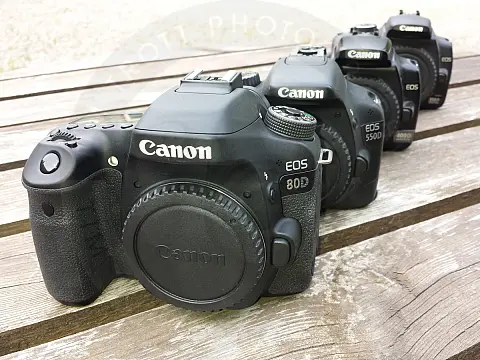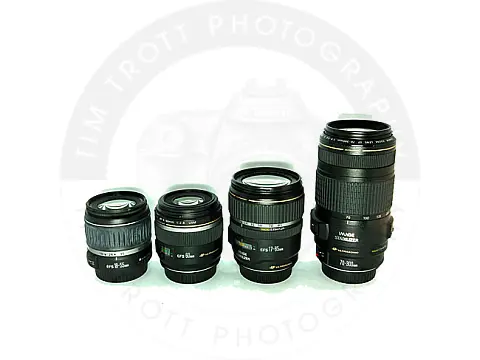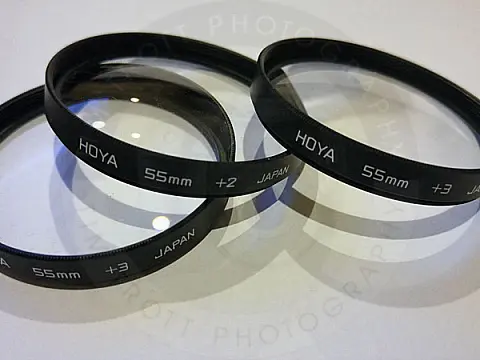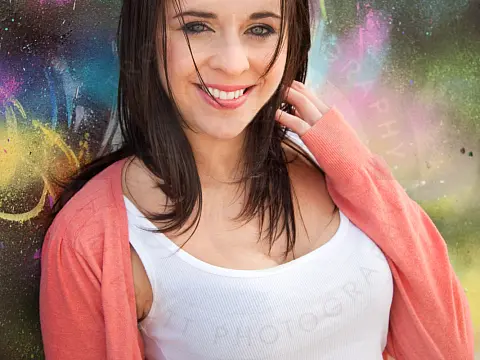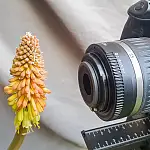Introduction to Photography Course - Definition & Types of PhotographyWe start the introduction to photography course by taking a look at what photography is, a brief history and the types of photography styles we can expect to see.
This article is part of a series of articles. Please use the links below to navigate between the articles.
- Introduction to Photography Course - Definition & Types of Photography
- How Cameras Work and Terminology Explained for Beginners
- What is the Exposure Triangle and How Does It Affects Exposure?
- Understanding Camera Shutter Speed for Beginners
- Aperture and Depth of Field in Photography Explained
- What is Digital Photography ISO and Grain?
- How to Understand Camera Lenses and Focal Length
- Essential Photography Composition Rules To Improve Your Photos
- Camera Metering Modes Demystified - Which One To Use
- Camera Shooting and Exposure Modes Explained
- Complete Guide to Flash Photography for Beginners
- When and How To Use A Camera Tripod In Photography
- What Are White Balance And Colour Temperature Camera Settings?
- How to Use Camera Histograms in Photography for Perfect Exposure
- Master These 10 Camera Settings For Your Best Photographs
- Why You Should Be Shooting in RAW - Reasons and Benefits Explained
- Essential Photo Editing Techniques to Enhance Photographs
- Complete Guide to Macro Photography for Beginners
- Beginners Landscape Photography Guide for Stunning Photos
Hello and welcome to my Photography Masterclass for Beginners tutorial series. Over the next few pages, you will learn all the basics of photography, from mastering exposure to nailing composition. If you're just starting in photography, and looking to improve your skills and master your camera, this free Photography Course for Beginners is the best way to learn photography. Master your camera with our free online photography course and start taking your best photos. Your best photos await you.

About the Author
Photography is my passion and a very important part of my life. For me it is a fantastic way to discover my surroundings in a new light. It inspires and motivates me to grow as a person and tell my story.
I tend to think of the act of photographing, generally speaking, as an adventure. My favourite thing is to go where I've never been.Diane Arbus
I was born and raised in the City of Bristol, where I spent most of my life working in Software Engineering. Having travelled on holiday to Scotland for many years, I fell in love with the Scottish countryside and a few years ago I moved to Glasgow in order to be closer to the stunning landscapes and wonderful people. I've since made Scotland my home and every day is an opportunity to grow, discover something new and live the adventure.
With over 25 years' digital photography experience and over 15 years' as a professional software engineer, web designer and business owner I have developed a keen eye for photography, detail and design. I also work with local charities and quite often donate my time to help raise awareness for their cause.
Introduction to Photography for Beginners
Let's start this free photography tutorials for beginners course by taking a look at what photography is and the types of photography styles we can expect to see. We'll then look at the different types of cameras you can choose from if you don't already own one or are looking to change. The free photography masterclass will then cover exposure settings, aperture, lens choice, composition and much more.
What is Photography?
Every day we are exposed to photography and visual imagery, whether it's an advertising campaign or simply looking at pictures of friends and family on a social networking site. Photography is an art form which allows us to convey a message, tell a story, sell a product, or simply illustrate how beautiful a certain place you visited is.
To some, it is a hobby, a passion, something to be enjoyed both in the taking of the photo and also sharing the results with others. To others, photography is a job, a means to make money. To a select few they make their living doing what they are passionate about.
History of Photography
The first permanent photograph was captured in 1826 (some sources say 1827) by Joseph Nicéphore Niépce in France. It shows the roof of a building lit by the sun. The photo was taken using a camera obscura and a photographic plate. 20 First Photos from the History of Photography .
All cameras work in the same basic way. Light from a scene is focused via the lens onto a photographic medium - light-sensitive paper, film or a CCD in the case of digital cameras. The photographic principles are the same regardless of if you are working with a digital compact, SLR or film.
Essential Photography Equipment You Need to Start Taking Amazing Photos
If you want to start taking amazing photos, you need the right equipment. This guide will tell you everything you need to get started!
1. Camera
The camera is the most essential piece of equipment for any photographer. There are a wide variety of cameras available, from basic point-and-shoot cameras to large and expensive DSLR cameras that have numerous features and settings. When choosing a camera, it's important to consider what type of photography you will be doing, as well as budget and portability concerns. We will look into camera choice in the next article.
2. Lens
A lens is what makes or breaks a photograph, since it impacts how much sharpness and clarity of the image has when it's taken. Most photographers use interchangeable lenses depending on their needs - telephoto lenses for capturing distant subjects, wide-angle lenses for sweeping landscapes, portrait lenses with shallow depth of field to capture dreamy portraits, etc. The lens choice can make a huge difference in the outcome of your photo shoot.
3. Tripod
Using a tripod while shooting can help ensure that all images are properly composed and free from camera shake. They also free up both hands so you can focus on other forms of composition such as focusing and manipulating light sources. A sturdy tripod is especially important if you plan on taking slow exposures or shooting heavy lenses or DSLR equipment with multiple accessories attached such as lights or microphones.
4. Filters
Filters are an easy way to change or deepen the quality or look of your photographs without spending too much money on separate lighting components. A simple polarising filter can dramatically reduce glare from objects such as water, glass buildings and windows while taking pictures outdoors.
5. Flash unit/Lighting Equipment
Most cameras come with a built-in flash, but these are less than ideal. A built-in flash is often underpowered and not directable. External flash units come with high-tech features, but those starting may opt for either strobe (continuous lighting) or they might want external flash which can be placed anywhere, making their lives easier. Among these two setups flash units will be better suited because they offer precise control over the amount of illumination depending on how close the subject is.
6. Battery/Power Source
Having extra batteries on hand is always crucial for any photographer planning for shoots outdoors or on location without access to electricity sources or outlets. As well as carrying spare batteries, make sure to grab the charger as well. You may get a chance to charge a flat battery whilst using a spare.
7 Memory Cards/Digital Storage
In order to properly store all images taken during various photo shoots, digital storage solutions must be employed. It does not matter whether you go with typical flash drives, SD cards, DVDs, SSD cards, etc. In addition, today's digital devices allow photographers to use cloud solutions in addition to physical storage solutions.
Different Photography Styles
There are many different styles, each having its preferred equipment toolkit and techniques. The way we shoot and what we capture determines what the photograph communicates. Understanding the different styles will help identify subjects you like to shoot and enhance your style.
Here is a quick rundown of the most popular styles. This is not an exhaustive list, there are many more styles, and most styles cross over and blend into others.
Landscape Photography
Landscape photography is one of the most popular styles and captures spaces within the world, sometimes vast and unending, but other times microscopic. Landscape Photographs typically capture the presence of nature but can also focus on man-made features or disturbances of landscapes.
Architectural Photography
Architectural photography is the photography of buildings and structures that are both aesthetically pleasing and accurate representations of their subjects. Architectural photography emphasizes creating accurate representations, and geometric symmetry in the photo. While architectural photography may seem simple there are lots of things to watch out for, and sometimes special equipment may be required. Most lenses will "fish eye" when capturing a whole building, and the walls will be distorted and appear to bow outwards. Special perspective control equipment is used to correct this and produce photographs of buildings with straight walls.
Portrait & Fashion Photography
Portrait photography or portraiture is the photography of a person or group of people that displays the expression, personality, and mood of the subject. The focus of the photograph is usually the person's face, although the entire body and the background or context may be included.
Fashion photography[/link] is similar to portrait photography, except that rather than focusing on the face, the emphasis is on the lifestyle. It also aims to capture the details of the clothing and other fashion items. Fashion photography is most often conducted for advertisements or fashion magazines
Macro Photography
Macro Photography is extreme close-up photography, usually of very small subjects, in which the size of the subject in the photograph is greater than life-size. Macro photography is great for really bringing out the detail of your subject but can be tricky especially for insects and animals as you need to get close to the subject.
Black and White Photography
Black and white, often abbreviated B/W or B&W, is more accurately monochrome since it captures shades of grey. The focus isn't on the colours but instead on shapes, tones and textures. Shadows and highlights become much more important.
Documentary Photography
Documentary photography is used mainly for reporting and journalism and can also be used for events and significant historical or political reporting. The aim is very much to capture the feelings and emotions of the time, often in groups, but sometimes the individual.
Time-lapse Photography
Time-lapse Photography uses very long exposure and is used to illustrate something happening over time. A popular example is a street at night with car lights blurred into long lines.
Aerial Photography
Photography taken from a different perspective, usually landscapes, from above. Examples would include photos taken from aeroplanes or balloons, drones or from a height.
Astrophotography
Astrophotography is a specialised type of photography for recording images of astronomical objects and large areas of the night sky. This typically uses specialised equipment and very long shutter speeds to capture everything from stars and constellations to planets and even distant galaxies.
In the next part of this free photography course we will look at how cameras work, the different camera types and formats and what megapixels are and why they are important. I'll also give some advice for those looking to buy a camera and what to look out for.

